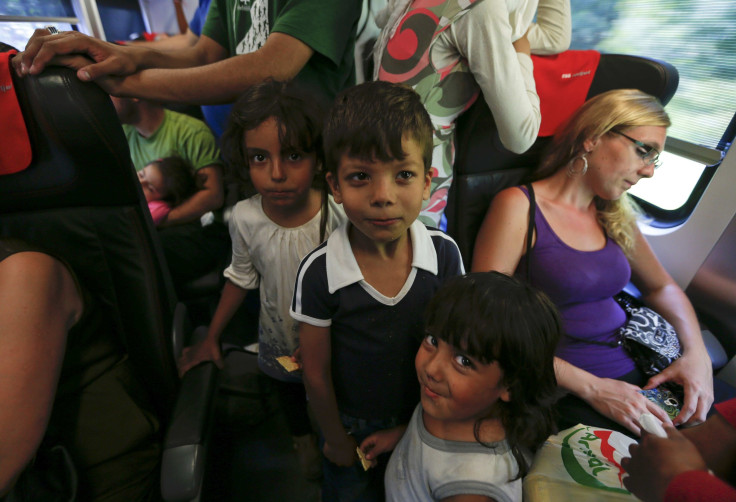Europe Migrant Crisis Update: Did Austria Violate Schengen Border-Free Policy By Stopping Train From Hungary?

Austrian authorities stopped a train from Hungary with hundreds of refugees and migrants Monday in the latest development in the migrant crisis that is causing chaos along Europe’s borders. The border checks in Austria seemingly violate the unrestricted travel among EU member states under the Schengen system, the pact allowing free movement on the continent.
European officials are planning emergency talks on Sept. 14 to tackle the crisis because currently there is no EU-wide policy in place. On Monday, Austrian authorities announced they would check if the 300 to 400 migrants aboard the train they stopped had applied for asylum in Hungary. If so, they would not let them continue on their journey to Germany, Reuters reported.
Both Austria and Hungary are cracking down at their borders as migrants and refugees continue crossing in large numbers on their way further north and west into Europe. After the gruesome discovery of 71 dead migrants in a truck near the border with Hungary last week and the arrest of five human traffickers on Monday, Austrian authorities announced stricter border checks, arguing that they were not border controls and were not in violation of the Schengen system.
Traffic was backed up more than 18.5 miles at one point at the Hegyeshalom border crossing between Austria and Hungary Monday as officials continued their checks, according to the Associated Press.
“We will do controls for an undetermined length of time at all important border crossings in the eastern region, looking at all vehicles that have possible hiding places for trafficked people,” said Austrian Interior Minister Johanna Mikl-Leitner.
Meanwhile, Hungary, which is completing an approximately 110-mile long razor wire fence along its border with Serbia, has asked Germany to clarify its stance on migrant policy in order to end “untransparent and adverse conditions.” According to EU rules, the member country where migrants and refugees first arrive is responsible for examining asylum claims before they are allowed to move onward. Hungary has alleged that Germany's promise to accept Syrian refugees has added to the recent surge seen on its border, while German Chancellor Angela Merkel has called on other European countries to take on more refugees.
"There’s no point in publicly calling each other names, but we must simply say that the current situation is not satisfactory," Merkel said.
Migrants and refugees from outside Europe must cross multiple countries before entering Germany, creating tension among EU states. The EU’s southern border along the Mediterranean Ocean remains a key entry point for migrants and refugees as they flee conflict and poor economic conditions in the Middle East and Africa. The border has become one of the deadliest with unseaworthy ships overcrowded with people. More than 2,400 people have died trying to reach the EU by sea so far in 2015.
In order to stem the flow to other borders throughout Europe, Germany has urged Italy to act swiftly to establish migrant centers by the end of the year so that refugees fleeing war-torn environments can be sorted from economic migrants.
"It will take months, but we will have a single European policy on asylum, not as many policies as there are countries," said Italian Prime Minister Matteo Renzi.
© Copyright IBTimes 2024. All rights reserved.






















